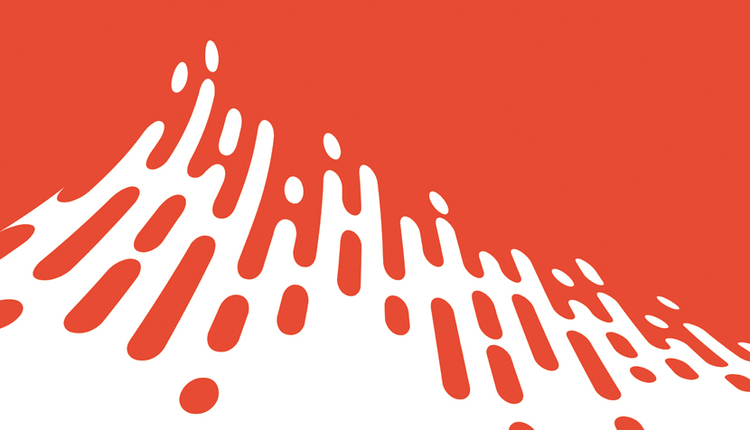
Image by: Parimal Pethani, ©2019 Getty Images
Previewed back in June, Dropbox formally unveiled the biggest change to its platform at their user event on September 25 with the arrival of Dropbox Spaces. These smart workspaces are designed to help employees stay organized and focused on the work that matters most.
This recent announcement underlines Dropbox's vision to move beyond folders and instead to a place where people can get their work done across desktops, web, or mobile channels. For the past 10 years, Dropbox has provided a magic folder in the cloud that appealed to consumers and companies alike for its ability to store, share, and collaborate on information. With Dropbox Spaces, the company will evolve from syncing files on a desktop to syncing people with the most important information for the task at hand.
This is no small feat. We have watched the work environment become more complex as new applications have entered the enterprise. The new design of Dropbox Spaces seeks to mitigate this complexity by placing the user experience at the forefront, presenting popular productivity tools, like Microsoft Office, Google G Suite, Slack, Zoom, and Trello, in a single view with related content and collaboration activities within reach. These new features are designed to reduce context switching and to focus the user experience on high-priority tasks.
There has been a renaissance in enterprise applications with the advent of cloud and artificial intelligence (AI) offering organizations a glimpse into the future of work. For example, the work graph that sits behind Dropbox Spaces continuously connects content and other signals (e.g., calendar topics, people discussing those topics, conference transcript details, etc.) to intelligently present relevant work to the user. Imagine a digital workspace that knows what you're working on and anticipates what you need—when you need it—so you don't have to search for it.
While cutting through the clutter and surfacing only what you need at this very moment sounds great, there is a trade-off. This intelligent team workspace, which holds all your PowerPoints, PDFs, associated conversations and context around them, lives in one place and its usefulness is limited to the few deep integrations that Dropbox offers today. Using Dropbox Extensions, partners can integrate other apps, but the value of the work graph and search feature is limited to content that is transferred into Dropbox storage.
This is only the beginning for Dropbox. Next year, they are looking to expand its Slack integration to automatically sync files within channels directly in Dropbox. Also, users can look forward to a Zoom Meet Now integration, which allows them to instantly start Zoom meetings from within Dropbox Spaces. When meetings end, the recordings and transcripts can be automatically saved in Dropbox.
This announcement comes at a time when end users are inundated with a myriad of applications designed to promote productivity and maintain data privacy. Dropbox Spaces is slightly ahead of what buyers are seeking in the future of work. This is perfect timing, as the interest in a digital workspace is heating up. The Dropbox mix of presentation, storage, and collaboration features adds significant value that is hard for other cloud vendors to replicate, especially the more closed ecosystems.
This is no small feat. We have watched the work environment become more complex as new applications have entered the enterprise. The new design of Dropbox Spaces seeks to mitigate this complexity by placing the user experience at the forefront, presenting popular productivity tools, like Microsoft Office, Google G Suite, Slack, Zoom, and Trello, in a single view with related content and collaboration activities within reach. These new features are designed to reduce context switching and to focus the user experience on high-priority tasks.
There has been a renaissance in enterprise applications with the advent of cloud and artificial intelligence (AI) offering organizations a glimpse into the future of work. For example, the work graph that sits behind Dropbox Spaces continuously connects content and other signals (e.g., calendar topics, people discussing those topics, conference transcript details, etc.) to intelligently present relevant work to the user. Imagine a digital workspace that knows what you're working on and anticipates what you need—when you need it—so you don't have to search for it.
While cutting through the clutter and surfacing only what you need at this very moment sounds great, there is a trade-off. This intelligent team workspace, which holds all your PowerPoints, PDFs, associated conversations and context around them, lives in one place and its usefulness is limited to the few deep integrations that Dropbox offers today. Using Dropbox Extensions, partners can integrate other apps, but the value of the work graph and search feature is limited to content that is transferred into Dropbox storage.
This is only the beginning for Dropbox. Next year, they are looking to expand its Slack integration to automatically sync files within channels directly in Dropbox. Also, users can look forward to a Zoom Meet Now integration, which allows them to instantly start Zoom meetings from within Dropbox Spaces. When meetings end, the recordings and transcripts can be automatically saved in Dropbox.
This announcement comes at a time when end users are inundated with a myriad of applications designed to promote productivity and maintain data privacy. Dropbox Spaces is slightly ahead of what buyers are seeking in the future of work. This is perfect timing, as the interest in a digital workspace is heating up. The Dropbox mix of presentation, storage, and collaboration features adds significant value that is hard for other cloud vendors to replicate, especially the more closed ecosystems.
Marci Maddox is the Research Manager for IDC's Enterprise Content Strategies program and is responsible for content workflow and content technologies research. She has 15 years of experience working with content and process applications at companies like OpenText and IBM and has helped clients realize the future of AI, IoT, and cloud benefits. Follow her on Twitter at @idcmarci or visit www.idc.com.










